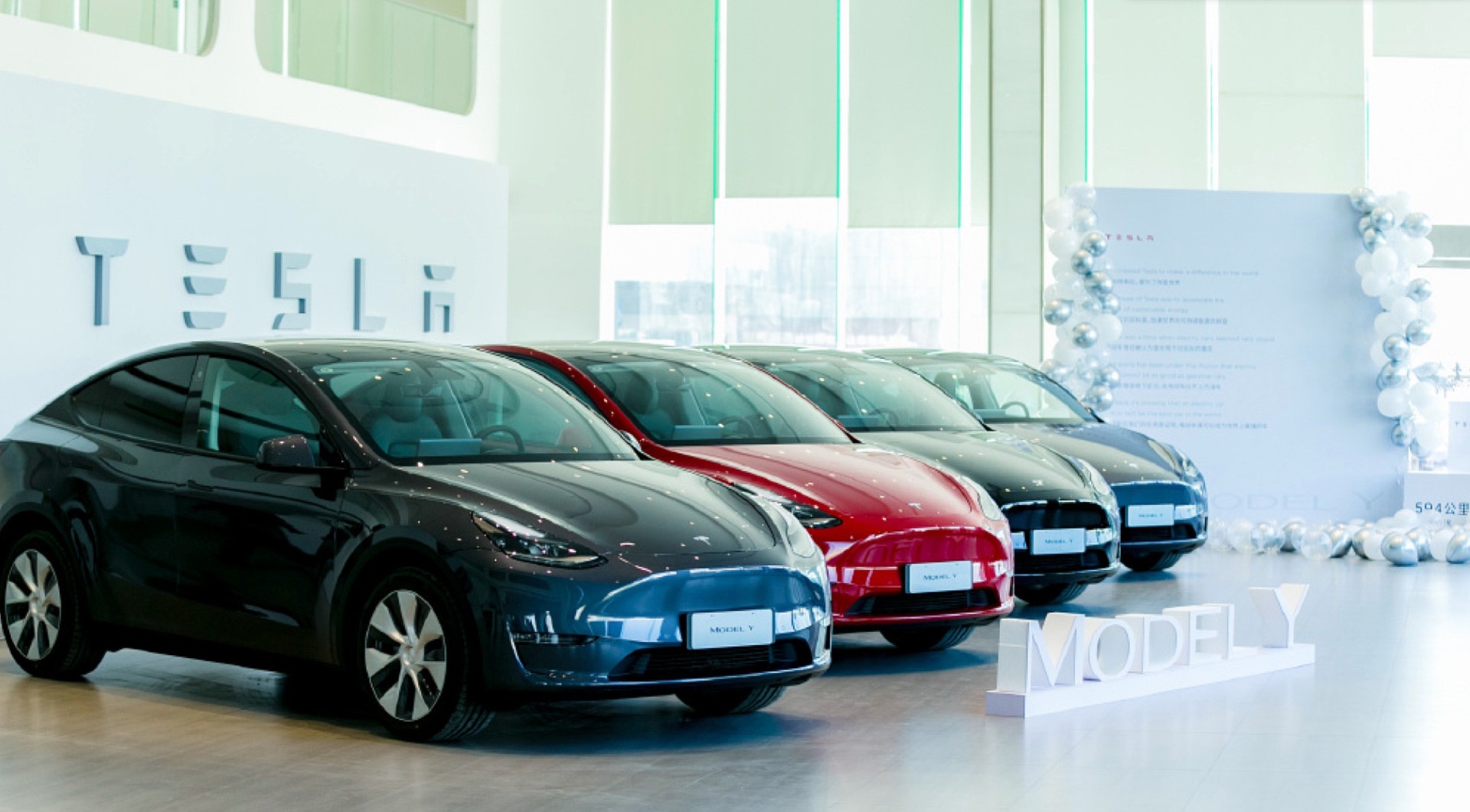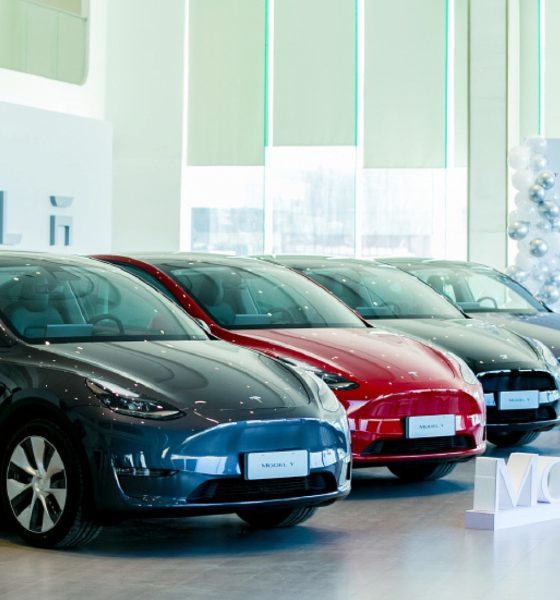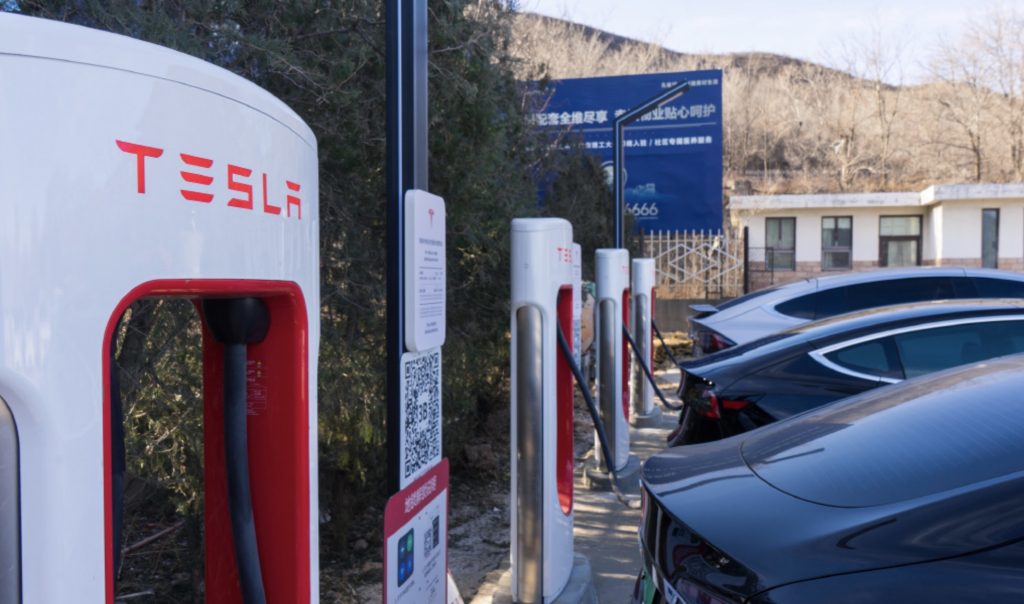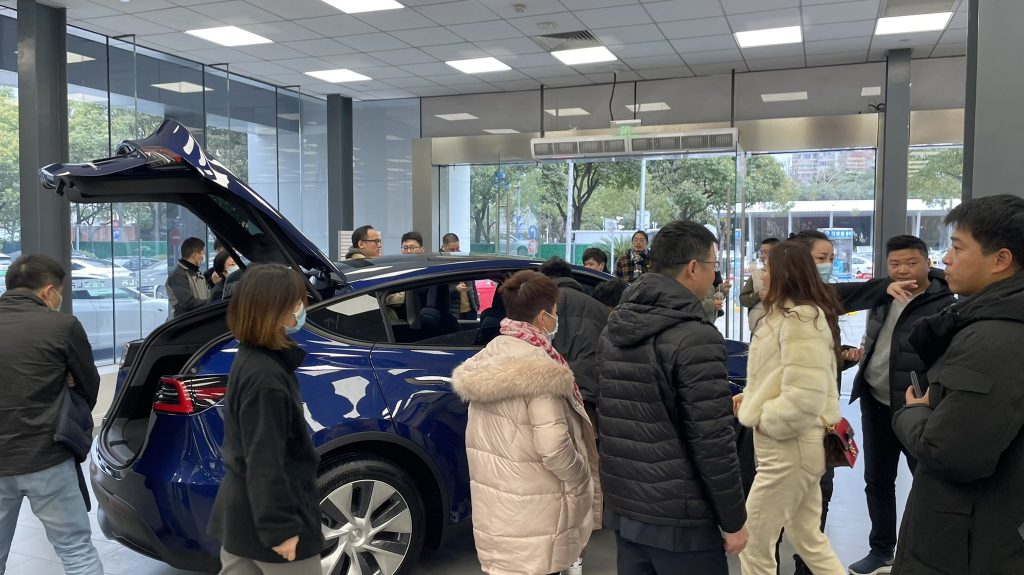

News
Tesla’s ‘Catfish Effect’ is propelling China’s local EV makers forward
When Tesla was preparing to enter the electric vehicle segment with a wholly-owned factory in China, former Industry Minister Miao Wei stated that the American EV maker’s presence would result in a “Catfish Effect” on the country’s electric car industry. Just over a year since Gigafactory Shanghai started operations, it seems like Miao’s statements are shaping up to be accurate.
The Catfish Effect suggests that the arrival of a strong competitor will encourage “weaker” players to innovate and better themselves. Tesla, being the world leader in EVs, seems to have played the catfish in China’s EV segment last year. The Silicon Valley-based electric car maker sold 114,000 made-in-China Model 3 vehicles during the first 11 months of 2020, as per data from the China Passenger Car Association (CPCA).

This month, Tesla dropped another strong player in the Chinese EV market in the form of the Model Y, an all-electric crossover that is more affordable than rivals from companies like Audi, Mercedes-Benz, and BMW. Tesla formally launched the Model Y in China with a starting price of RMB 339,900 ($52,550), 30% lower than its pre-launch price. This resulted in Tesla showrooms being swamped by prospective Model Y buyers. Competitors were appropriately unnerved, as per a report from The Nikkei Asian Review.
China has stood as the world’s largest market for electric cars. This means that China’s premier EV makers such as BYD, SAIC, NIO, and Xpeng Motors are no joke. Local electric car makers can design and create compelling EVs, but last year, most–if not all–were eclipsed by the Model 3, whose technology was a cut above its domestic rivals. Its robust set of standard features like Autopilot also gave it an edge against competitors.
Following the launch of the Model Y in China, Yu Liguo, the president of Arcfox, an EV unit of BAIC Motor, remarked that Tesla’s advantage in the country’s EV sector would likely not be matched by local manufacturers, at least not in the near future. This is especially true in the case of features like Autopilot, which place Tesla far ahead of competitors in the Chinese EV market and globally. Despite this, Yu was optimistic, noting that Chinese EV makers would catch up eventually.

Pure EV companies from China are initiating programs that are aimed at expanding their business. NIO is ramping its battery-swapping network, and it recently launched a new used-car platform to make its vehicles more attainable to buyers. Xpeng Motors’ first European orders were also shipped from China to Norway. Legacy automakers such as SAIC, propelled by vehicles like the MG ZS EV, sold nearly 12,000 electric cars in Europe during the first nine months of 2020.
Granted, Chinese-branded electric vehicles only account for about 10% of the global EV market, as per a report from UBS Securities. But thanks to the presence of Tesla, China’s electric vehicle makers may soon adopt more assertive strategies. With Gigafactory Shanghai ramping Model 3 and Model Y production, Tesla’s Catfish Effect may very well be underway in China.
The Teslarati team would appreciate hearing from you. If you have any tips, email us at tips@teslarati.com or reach out to me at maria@teslarati.com.
Check out a MIC Model Y delivery event video below.

Elon Musk
Elon Musk and Tesla AI Director share insights after empty driver seat Robotaxi rides
The executives’ unoccupied tests hint at the rapid progress of Tesla’s unsupervised Robotaxi efforts.

Tesla CEO Elon Musk and AI Director Ashok Elluswamy celebrated Christmas Eve by sharing personal experiences with Robotaxi vehicles that had no safety monitor or occupant in the driver’s seat. Musk described the system’s “perfect driving” around Austin, while Elluswamy posted video from the back seat, calling it “an amazing experience.”
The executives’ unoccupied tests hint at the rapid progress of Tesla’s unsupervised Robotaxi efforts.
Elon and Ashok’s firsthand Robotaxi insights
Prior to Musk and the Tesla AI Director’s posts, sightings of unmanned Teslas navigating public roads were widely shared on social media. One such vehicle was spotted in Austin, Texas, which Elon Musk acknowleged by stating that “Testing is underway with no occupants in the car.”
Based on his Christmas Eve post, Musk seemed to have tested an unmanned Tesla himself. “A Tesla with no safety monitor in the car and me sitting in the passenger seat took me all around Austin on Sunday with perfect driving,” Musk wrote in his post.
Elluswamy responded with a 2-minute video showing himself in the rear of an unmanned Tesla. The video featured the vehicle’s empty front seats, as well as its smooth handling through real-world traffic. He captioned his video with the words, “It’s an amazing experience!”
Towards Unsupervised operations
During an xAI Hackathon earlier this month, Elon Musk mentioned that Tesla owed be removing Safety Monitors from its Robotaxis in Austin in just three weeks. “Unsupervised is pretty much solved at this point. So there will be Tesla Robotaxis operating in Austin with no one in them. Not even anyone in the passenger seat in about three weeks,” he said. Musk echoed similar estimates at the 2025 Annual Shareholder Meeting and the Q3 2025 earnings call.
Considering the insights that were posted Musk and Elluswamy, it does appear that Tesla is working hard towards operating its Robotaxis with no safety monitors. This is quite impressive considering that the service was launched just earlier this year.
Elon Musk
Starlink passes 9 million active customers just weeks after hitting 8 million
The milestone highlights the accelerating growth of Starlink, which has now been adding over 20,000 new users per day.

SpaceX’s Starlink satellite internet service has continued its rapid global expansion, surpassing 9 million active customers just weeks after crossing the 8 million mark.
The milestone highlights the accelerating growth of Starlink, which has now been adding over 20,000 new users per day.
9 million customers
In a post on X, SpaceX stated that Starlink now serves over 9 million active users across 155 countries, territories, and markets. The company reached 8 million customers in early November, meaning it added roughly 1 million subscribers in under seven weeks, or about 21,275 new users on average per day.
“Starlink is connecting more than 9M active customers with high-speed internet across 155 countries, territories, and many other markets,” Starlink wrote in a post on its official X account. SpaceX President Gwynne Shotwell also celebrated the milestone on X. “A huge thank you to all of our customers and congrats to the Starlink team for such an incredible product,” she wrote.
That growth rate reflects both rising demand for broadband in underserved regions and Starlink’s expanding satellite constellation, which now includes more than 9,000 low-Earth-orbit satellites designed to deliver high-speed, low-latency internet worldwide.
Starlink’s momentum
Starlink’s momentum has been building up. SpaceX reported 4.6 million Starlink customers in December 2024, followed by 7 million by August 2025, and 8 million customers in November. Independent data also suggests Starlink usage is rising sharply, with Cloudflare reporting that global web traffic from Starlink users more than doubled in 2025, as noted in an Insider report.
Starlink’s momentum is increasingly tied to SpaceX’s broader financial outlook. Elon Musk has said the satellite network is “by far” the company’s largest revenue driver, and reports suggest SpaceX may be positioning itself for an initial public offering as soon as next year, with valuations estimated as high as $1.5 trillion. Musk has also suggested in the past that Starlink could have its own IPO in the future.
News
NVIDIA Director of Robotics: Tesla FSD v14 is the first AI to pass the “Physical Turing Test”
After testing FSD v14, Fan stated that his experience with FSD felt magical at first, but it soon started to feel like a routine.

NVIDIA Director of Robotics Jim Fan has praised Tesla’s Full Self-Driving (Supervised) v14 as the first AI to pass what he described as a “Physical Turing Test.”
After testing FSD v14, Fan stated that his experience with FSD felt magical at first, but it soon started to feel like a routine. And just like smartphones today, removing it now would “actively hurt.”
Jim Fan’s hands-on FSD v14 impressions
Fan, a leading researcher in embodied AI who is currently solving Physical AI at NVIDIA and spearheading the company’s Project GR00T initiative, noted that he actually was late to the Tesla game. He was, however, one of the first to try out FSD v14.
“I was very late to own a Tesla but among the earliest to try out FSD v14. It’s perhaps the first time I experience an AI that passes the Physical Turing Test: after a long day at work, you press a button, lay back, and couldn’t tell if a neural net or a human drove you home,” Fan wrote in a post on X.
Fan added: “Despite knowing exactly how robot learning works, I still find it magical watching the steering wheel turn by itself. First it feels surreal, next it becomes routine. Then, like the smartphone, taking it away actively hurts. This is how humanity gets rewired and glued to god-like technologies.”
The Physical Turing Test
The original Turing Test was conceived by Alan Turing in 1950, and it was aimed at determining if a machine could exhibit behavior that is equivalent to or indistinguishable from a human. By focusing on text-based conversations, the original Turing Test set a high bar for natural language processing and machine learning.
This test has been passed by today’s large language models. However, the capability to converse in a humanlike manner is a completely different challenge from performing real-world problem-solving or physical interactions. Thus, Fan introduced the Physical Turing Test, which challenges AI systems to demonstrate intelligence through physical actions.
Based on Fan’s comments, Tesla has demonstrated these intelligent physical actions with FSD v14. Elon Musk agreed with the NVIDIA executive, stating in a post on X that with FSD v14, “you can sense the sentience maturing.” Musk also praised Tesla AI, calling it the best “real-world AI” today.








